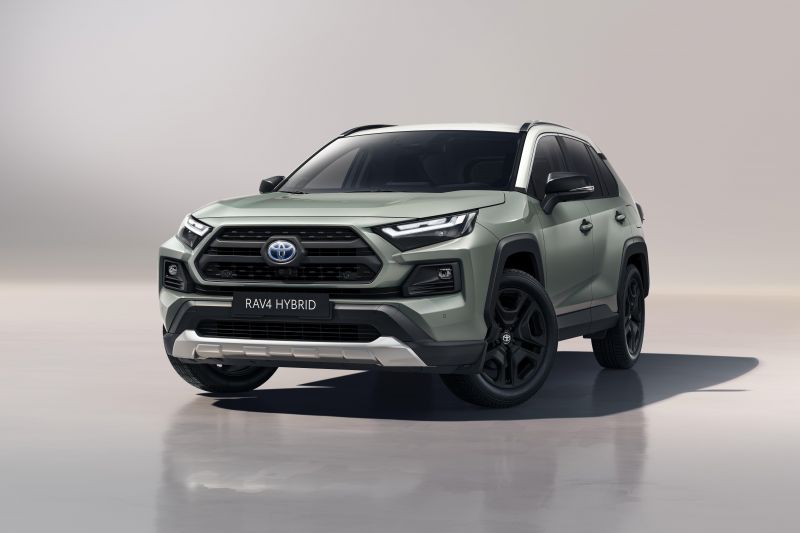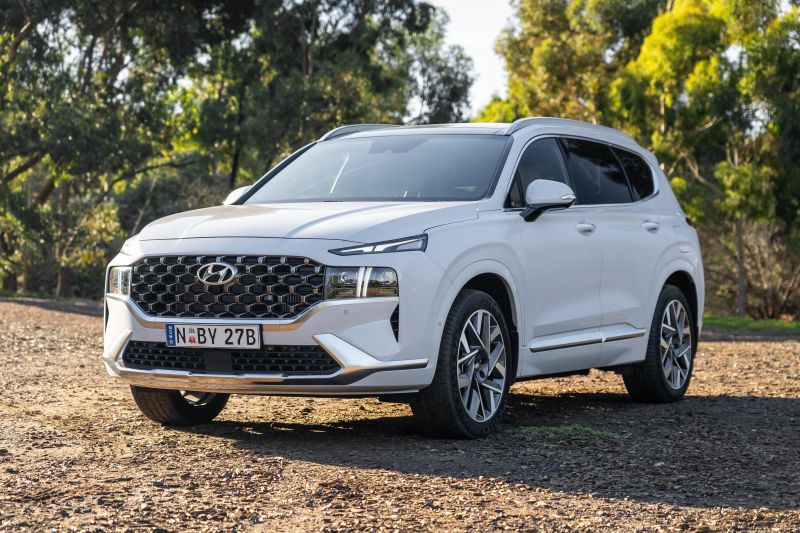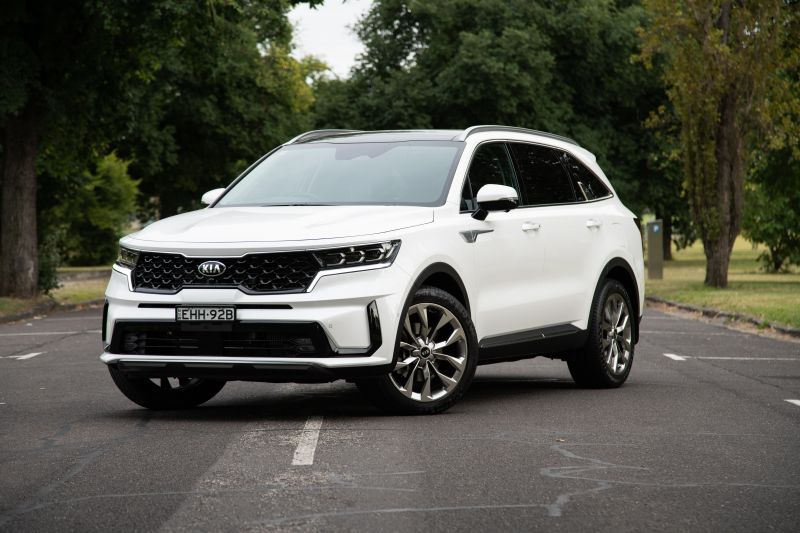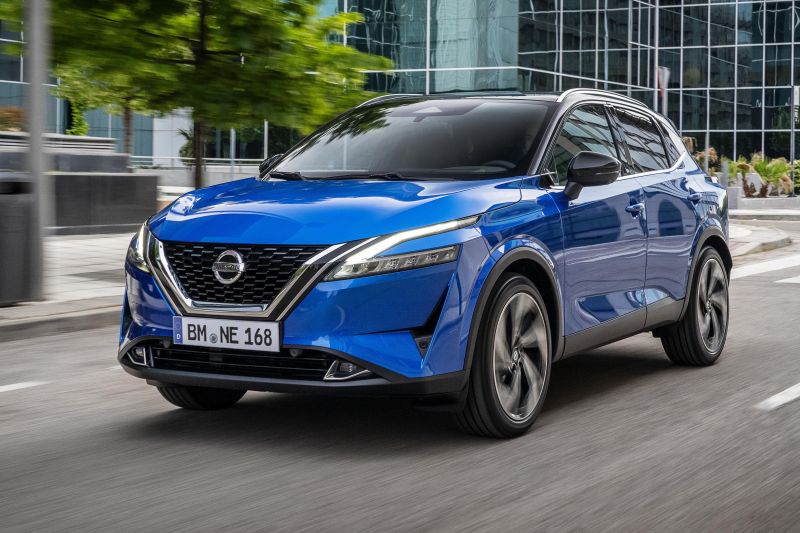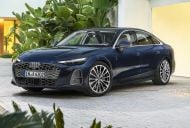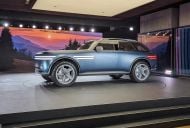Electric cars and plug-in hybrids get more attention, but at this moment in time Australian SUV buyers still prefer cheaper conventional hybrids. And with fuel prices at record highs, it’s safe to say demand won’t go backwards.
The latest sales data shows Australians have bought more than 55,000 hybrids this year, equal to nearly 10 per cent of the passenger and SUV total. Most of this comes down to Toyota, which is easily the dominant player offering hybrids across most of its non-commercial vehicles.
To cite the highest-profile example, a great majority of RAV4 sales are the petrol-electric hybrid – to the point where there are months-long wait lists.
A Toyota hybrid’s low cost premium over a non-hybrid means you’ll probably recoup the outlay with fuel savings inside a few years depending on mileage – and you’ll get a quieter and more refined drive to boot. You can’t yet make the same solely economic argument for a PHEV.
As if to reinforce its dominance Toyota will introduce a RAV4 update early in 2022, and is working to secure better supply lines thereof.
While Toyota (and to a lesser extent Subaru with its electrified Forester and XV) have led the charge in this space, other brands are of course eager to cash in – and have plans for hybrid SUVs of their own. Here are a few examples:
MORE: Toyota RAV4 vs Toyota RAV4 Hybrid – Which should you buy?
Haval H6
Haval, part of the sprawling Great Wall Motor, is the fastest-growing car brand in Australia at the moment thanks to its Jolion and H6 SUVs – both of which look modern, are well-equipped at a cheap price, have a seven-year warranty, and are in plentiful supply.
In early 2022 the H6 mid-size SUV gets a hybrid option, promising a better-value take on the hugely successful RAV4 formula. Indeed, its turbo-petrol engine and unusually powerful two-speed electric motor combine to make class-best 179kW and 530Nm outputs.
Fuel economy is also cut to a claim of 5.2 litres per 100km, compared to 4.8L/100km for the less powerful RAV4. The only downside on paper is that the Haval hybrid doesn’t have an all-wheel drive option unlike its chief competitor.
MORE: Haval H6 Hybrid here early in 2022
Honda HR-V
Honda was a hybrid pioneer with Toyota, but failed to go on with it locally. But its new-generation, now-Japan-sourced HR-V small SUV arrives in Australia in early 2022, and an e:HEV hybrid will follow a few months after.
The HR-V e:HEV hybrid pairs a 1.5-litre petrol engine and two electric motors for total outputs of 96kW and 253Nm. Like a Toyota hybrid, the Honda system can drive using electric motors at low speeds, the petrol engine, or a combination of the two.
Claimed fuel economy is 5.4L/100km on the WLTP test cycle, and the e:HEV hits 100km/h in 10.6 seconds. The Toyota C-HR’s hybrid system uses a claimed 4.8L/100km on the WLTP test, but the Honda will be roomier and more conventionally appealing.
MORE: 2022 Honda HR-V hybrid specs revealed
Hyundai Santa Fe
Hyundai’s Santa Fe is a bit larger than the earlier pair mentioned, with a third row of seats. A model-first hybrid will arrive in the first quarter of 2022 to join the existing diesel and thirstier V6 offerings.
The hybrid will be the first variant in the local range to offer petrol and all-wheel drive – the V6 is solely available with front-wheel drive. It will be powered by a 1.6-litre turbocharged four-cylinder petrol engine teamed with a 44.2kW electric motor and 1.49kWh lithium-ion battery.
Combined power and torque outputs are rated at 169kW and 350Nm respectively. According to Hyundai Motor Europe’s specifications, the Santa Fe Hybrid with AWD consumes a diesel-like 6.9-7.6L/100km on the combined WLTP cycle depending on specification.
On a side note, Hyundai is keen on a hybrid version of its new, smaller Tucson, but hasn’t yet locked in a supply deal.
MORE: Hyundai Santa Fe Hybrid delayed until Q1 2022
Kia Sorento
Kia’s mechanical twin to the aforementioned Hyundai Santa Fe already comes as a petrol, diesel and PHEV, and the new hybrid will complete the range from 2022. It’s the same drivetrain as the Santa Fe’s so we won’t re-run that information here.
With both front- and all-wheel drive available it’ll have broad appeal, and for context should be a little quicker to 100km/h (8.7 seconds using UK data) than the diesel while similarly fuel efficient, and superior in stop/start urban driving.
Unfortunately it’ll likely only come in range-topping GT-Line specification at launch due to continued tight supply – Kia will focus on higher-margin and more in-demand models first – which will limit take-up.
As reported here, Kia Australia is keen on bringing a hybrid version of its new Sportage to market next year too, just as Hyundai is with the related Tucson.
MORE: 2022 Kia Sorento Hybrid initial details for Australia
Lexus NX
A familiar badge. Previously set for a launch in the fourth quarter of 2021, the new-gen NX crossover will now launch in January 2022 “to assist with anticipated high demand”.
There’s an updated hybrid option called the NX350h, which replaces the current strong-selling NX300h.
The NX350h is expected to be the most popular variant, and mates a 2.5-litre petrol four-cylinder engine with an electric motor and lithium-ion battery. It has a total system output of 179kW of power, making it the most powerful four-cylinder hybrid Lexus has offered.
It’ll be available with front- and all-wheel drive, and has a combined fuel economy rating of 5.0L/100km with both drive types. In contrast, the outgoing NX300h uses 5.7L/100km. The new NX has moved to the TNGA-K architecture that underpins the current Toyota RAV4.
MORE: 2022 Lexus NX specs – redesigned SUV due in January
Nissan Qashqai
The brand new Qashqai will launch first with a new turbo-petrol, however a model-first ‘e-Power’ hybrid is also on track to arrive during 2022, probably into the second half however.
Unlike Toyota’s hybrid system in which an electric motor assists a petrol engine coupled to the drive axle, Nissan’s e-Power uses a combustion engine as a generator that powers a small battery, which in turn spins the electric drive motor.
The second-generation e-Power system pairs a 140kW electric motor similar to a Leaf EV’s with a 115kW 1.5-litre turbocharged three-cylinder petrol engine-generator. Local fuel figures remain to be detailed.
The Qashqai e-Power also allows ‘one pedal driving’ via the e-pedal accelerator, which uses friction for regenerative braking to slash use of the brake pedal by as much as 90 per cent in urban commuting.
MORE: Nissan e-Power hybrids in Australia from 2022
More reading on the topic of hybrids can be found at our hybrid landing page here, or via some examples below.
MORE: Toyota RAV4 vs Toyota RAV4 Hybrid – Which should you buy?
MORE: Toyota Australia’s hybrid sales grow exponentially, have eclipsed 200,000
MORE: Australian government fleets leading hybrid and EV take-up





